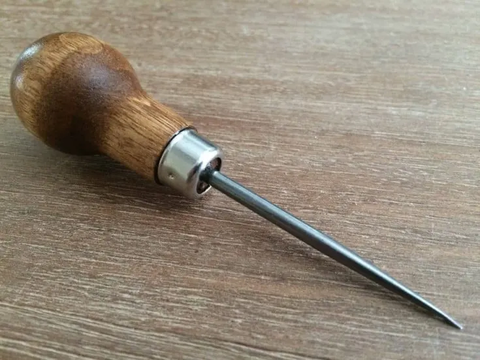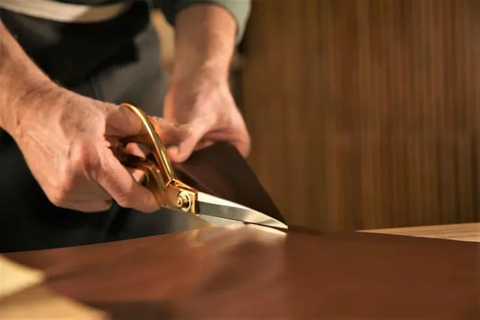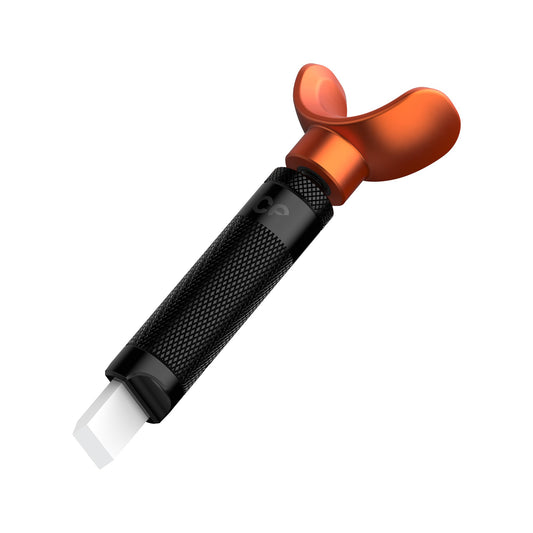Top 11 Leather Working Tools for Advanced Crafting

Leather working is on the rise as an exciting, fruitful hobby. Of course, like most hobbies, leather working can become a bona fide, profit-generating business. Whether a leather novice or a seasoned pro, it’s essential to have high-quality tools in your arsenal. There are some basic instruments a leatherworker can’t live without, while countless specific tools can help craft highly individualized work.
So, without further ado, let’s dive into the 11 best leather working tools, how they work, and what types perform best for different leather crafts.
Things to Consider Before Choosing Leather Working Tools
One crucial thing to consider when hunting for the best leather tools is to keep “quality” at the forefront of your mind. You don’t have to empty your bank account, but carefully consider the features of each tool and how they’re built. In addition, think about the type of leather work you’ll do, as there are general and specialized tools on the market.
The Best Leather Working Tools
- Swivel Knife
- Leather Working Awls
- Burnisher and Slicker Tools
- Stitch Groover
- Mallets
- Leather Conditioner
- Edgers and Bevelers
- Leather Needles
- Punching Tool
- Leather Scissors
- Strap Cutters
1. Swivel Knife

This tool is excellent for creating intricate details and outlining in leather work. You’ll find the indented finger rest allows you control over your cutting. If you’re hunting for that perfect swivel knife, look no further than the Slice® Swivel Knife. The indented finger rest is built for maximum comfort, so you can work for long periods without experiencing discomfort.
Additionally, the zirconium oxide blade never needs sharpening, nor does it rust. The ergonomic design and cross-hatched grip give you complete control over your work. It’s a durable, sturdy tool that can weather the elements.
2. Leather Working Tool: Awls

Awls are utilized for poking holes in leather. Doing this allows you to string lacing or thread through the holes and create designs. There are a handful of different awls on the market, and each performs a different function.
For example, a collar awl is excellent for making saddles, while a curved awl has a curved hook that can undo stitches and create tighter stitches. A lacing awl pulls lacing through leather, a diamond tip awl makes smaller holes than your average awl, and a needle awl is a more durable version of a needle.
3. Burnisher and Slicker Tools

Burnisher and slicker tools are a package deal – you use them to finish leather edges. You can smooth out or “burnish” leather through friction. This heat strengthens and hardens the leather and ensures no hanging fibers. There are different kinds of burnishers on the market: wood, glass, brass, exotic wood, and plastic.
4. Stitch Groover

Here’s another best leather working tool that is invaluable for your workbench. A stitch groover cuts a groove in your leather, allowing the stitches to sink below the surface. This prevents snags and thread abrasion. The grooving tip and the adjustable edge guide ensure that multiple grooves can be cut, opening the doors to design possibilities.
5. Mallets

Much like regular mallets, leather working tools, the mallets are used for striking other tools. Composed of either rawhide or plastic, these instruments are great to have as additional assets. The rawhide mallets, in particular, boast a dense rawhide top perfect for shock absorption and protecting metal tools when struck.
6. Leather Conditioner

Even leather needs some good ole-fashioned hydration. Leather conditioner is pretty self-explanatory – after cleaning, it restores moisture and oils that are stripped during the cleaning process. Some conditioners leave a protective finish over the leather, which helps it maintain resistance to debris and water.
7. Edgers and Bevelers

If you prefer softer, rounder edges on your leather work, edgers and bevelers are where it’s at. These tools shave off the square edges of your leather creations. You’ll find softer edges on leather accessories such as wallets and belts. There are a few different kinds of bevelers, including the Bissonnette edge beveler, which has a circular blade that can soften edges from all angles.
The common edge beveler’s prong-shaped blade edges away the sharp corners of leather, while the French edge beveler boasts a rectangular edge that skives and gouges leather. Lastly, the wheel beveler has a circular, pizza cutter-like blade that creates decorative markings in leather.
8. Leather Tools: Needles

Leather needles are similar to sewing needles, except they come in a range of sizes, thicknesses, lengths, different-sized points, and different-sized eyelets. It all depends on what type of leather you’re sewing and what you’re creating.
The types of best leather tools needles include glovers needles (named primarily because glove makers use them), leather lacing needles (they use lace instead of thread), harness needles (most commonly used when stitching with thread), and curved leather needles (used for sewing leather sections from different planes).
9. Punching Tool

One of the essential skills in leathercraft is the art of punching (no, not that kind). Punching produces holes and shapes, sets hardware, and cuts edges and patterns in leather. You can find punching tools in varying sizes and shapes. Typically, you’ll strike your punching tool with a mallet or hammer.
Commonly used punching tools to punch leather pre-stitching include stitching punches, which create round holes. Pricking irons leave slits at a 45-degree angle. Lastly, round dent punches leave a small, rounded impression without removing material.
10. Leather Scissors

Leather scissors may resemble regular, fabric-centric scissors, but there’s one significant difference: leather scissors are more durable. You won’t have to worry about them breaking while tackling leather, nor will you struggle on the cutting front.
There are multiple brands of leather scissors, so it’s crucial to figure out the appropriate type for your particular leatherwork. For example, Fiskars offers sturdy leather scissors. Pro-Master and Kai Scissors also sell quality tools. You can also look into left-handed leather scissors if you’re a leftie and leather shears for more heavy-duty projects.
11. Strap Cutters

Strap cutters cut leather straps from large leather hunks and hide. They’re hand-held wooden devices equipped with a mounted blade. You can usually adjust the thickness before you cut my way of marking measurements on the device.
Some leatherworkers utilize strap cutters to make belts, as it’s easy to cut a thin, long strap from a sizeable piece of leather. Additionally, you can make leather laces. Occasionally, strap cutters are also called “ploughs.”
-
Swivel Knife
Regular price $59.99 USDRegular priceUnit price per

